EXTREME SPENDING FOR 10.5 RACING
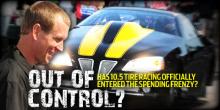
Steel bodied cars with unlimited engines, running as quick and fast as they could with the real limitations being a stock front suspension and the great equalizer – a 10.5-inch tire.
The costs were reasonable.
That was then, this is now.
Outlaw 10.5 racing has grown far beyond its local backwoods origins and now races as sanctioned categories, the largest and most organized being under the ADRL guidance.
If You’re Running This Class, Better Bring A Lot Of Dough …
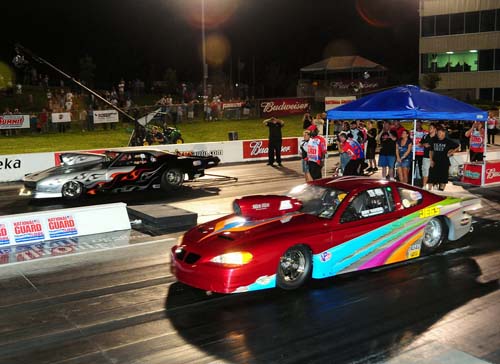
The idea was impressive.
Steel bodied cars with unlimited engines, running as quick and fast as they could with the real limitations being a stock front
suspension and the great equalizer – a 10.5-inch tire.
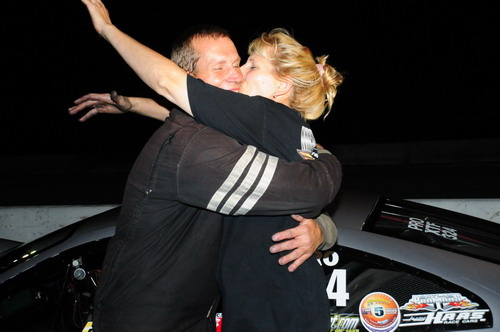
That was then, this is now.
Outlaw 10.5 racing has grown far beyond its local backwoods origins and now races as sanctioned categories, the largest and most organized being under the ADRL guidance.
Want to build an Extreme 10.5 race car? Be prepared to spend a lot of money for a turn-key operation. Be prepared to spend even more to keep up with front-runners Billy Glidden, Jeff Naiser and Todd Moyer. Those are just the top three point earners on the series. Ranked behind them are more than a handful of equally potent drivers.
Billy Glidden has dominated the ADRL series, winning every event he entered since last summer except for two, and has already started to feel the pinch of increased operating costs associated with competing in the class.
Glidden, the son of ten-time NHRA Pro Stock champion Bob Glidden, has watched the Extreme 10.5 spending spree take off. The spending spree doesn’t surprise him. Glidden contends it isn’t only this class experiencing increasing monetary demands.
“It doesn’t matter what class it is, the costs have gotten out of control,” Glidden admitted.
Glidden told CompetitionPlus.com that he got into 10.5 racing because it made the most sense at the time since leaving the Pro Stock ranks in the 1990s. He took a Mustang, three wheels into the car crusher, and found a class to race it in.
a d v e r t i s e m e n t
Click to visit our sponsor's website
Some might say the dominance by Glidden in Extreme 10.5 has been
responsible for enticing racers to spend more money in order to keep
up.
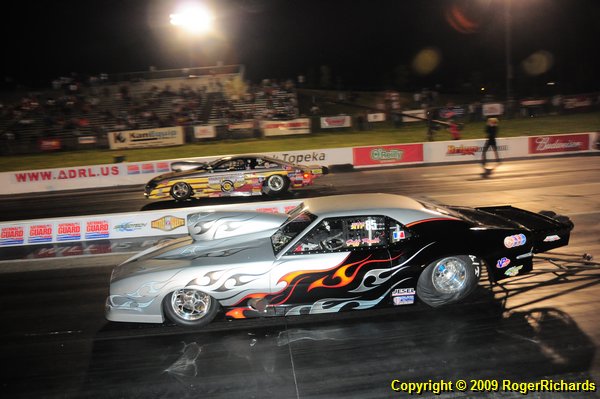
“Most of the people in this class, this [racing Outlaw 10.5]
isn’t what they’ve done, they all have their big successful businesses,
so they don’t have the knowledge based around what we do,” Glidden
said. “They have to spend lots of money to get the very best to race
this class. I guess if they are chasing the one winning the races, then
they are going to have to spend money. I’m sure we are responsible for
people spending money.”
Extreme 10.5 cars are purpose-built and while the early versions of
the narrow tire cars were crude and on the bad side of borderline
dangerous, the latest trend has been to build a car interchangeable
with an ADRL Pro Extreme combination.
Chris Lunsford, of Sheppard Race Cars in Covington, Ga., specializes in
the building of Outlaw 10.5 style race cars. He’s watched the
metamorphosis of these cars from those crudely fabricated steel race
cars to high tech, lightweight wonders.
His latest creation, the classic Camaro, driven by Jeff Paulk, has
reached the final round of the two most recent ADRL Extreme 10.5 events.
Paulk has been one of only two drivers to beat Glidden this year.
Glidden drives an ex-Mark Pawuk Pro Stocker. Forget the hand-me-down
Pro Mods or Pro Stockers; Lunsford says the 10.5 cars are largely
purpose built.
“These are no assembly line cars because everything that is built is
custom built,” Lunsford explained. “We take a car off the road or a
shell of a car and hull it out. We retain the stock front suspension
and frame rails. There’s a lot of custom work with making a suspension
on a factory sub-frame.”
Lunsford has built a wide variety of cars including a Cadillac XLR driven in off of the street.
Paulk’s car represents the changing face of the 10.5 cars because its
construction comes closer to being a Pro Modified than, for example,
the Caddy was.
a d v e r t i s e m e n t
Click to visit our sponsor's website
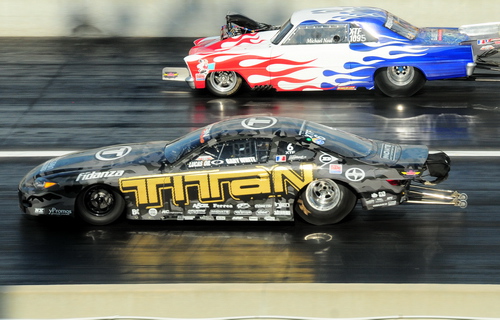
“That’s a different deal for us,” Lunsford said of Paulk’s classic
Chevrolet. “That’s basically a Pro Modified on a 10.5-inch tire and
we’ve got a Tim McAmis body on the car. This is what it has evolved to
over the years.”
Lunsford said he’s gravitating more in the future towards cars like
Paulk’s because his company has learned how to build a Pro Modified
style chassis that will work efficiently with a 10.5 inch tire.
This is a far cry from the early years of Outlaw 10.5 racing.
“The best way to correlate that is with what the Drag Radial guys are
doing now,” Lunsford explained. “There’s no S.F.I. specs to meet how
fast these guys are going.”
Want a car like Paulk’s? Get ready to plunk down about $150,000.
Lunsford says that one will get a state of the art car, but most importantly a safer one.
Back in the day, Lunsford added, the original Outlaw 10.5 cars were
essentially bracket cars with huge engines with nitrous oxide between
the fenders.
“They were scary to watch and all over the track with wheelstands,” Lunsford said.
A major factor in the over-the-edge mentality was in the engines and
until the last few years, the chassis were hard pressed to keep up with
the horsepower output.
Some spend their money for the lightest of the light chassis. Others put the cubic dollars between the fenders.
The early stages of 10.5 racing saw race cars with the average engine
ranging from 450 to 550 inches. Spartanburg, SC-based engine builder
Gene Fulton said he recently finished a 904-inch engine.
“You can never sell them enough,” Fulton admitted. “What has happened
in the last three years is that racing has gone outlaw. When it went
outlaw it only meant we had to build bigger and even more exotic custom
motors. That’s what we have to do now.”
Fulton confirmed that he’s building more 5.2 and 5.3 bore space
engines, combinations once reserved for Pro Modified and mountain motor
Pro Stock.
“And that’s way more expensive,” Fulton added. “There are no rules and
regulations and that has created a situation where we have to keep
building and building.”
Why the larger engines when running such a narrow tire?
“Back then nobody believed they would be able to handle all of that
power,” Fulton said. “They kept trying more and more power, and the
cars kept taking it. Eventually they got to be humongous.”
a d v e r t i s e m e n t
Click to visit our sponsor's website
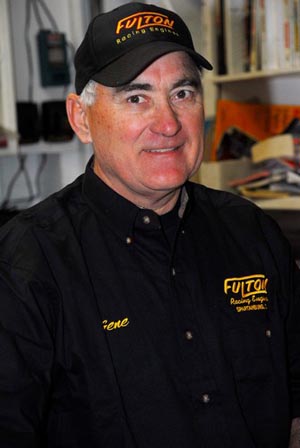
“When you get about 850 to 860 inches, you get to the point of a diminishing return,” Fulton cautioned. “You’re not really gaining anything when you get bigger than that.”
Want one of these big engines? That will cost in the range of $80,000.
Glidden is atop the Extreme 10.5 field despite running an engine displacing only 404 cubic inches. The demands of trying to stay one step ahead of the hitters Naiser, Moyer, Spiro Pappas has forced him to push his proven combination to the lethal edge, so much so that he’s pondering sitting out the ADRL U.S. Drags next weekend in Dinwiddie, Va.
“Since we returned from Topeka, we’ve barely left the shop,” Glidden admitted. “I have been trying to convince my engines that they are something they’re not. I know I’m going to tear them up in their current configuration so I am making gigantic redesign changes to my engine.”
Reinventing himself may include abandoning the 404-inch engine he’s been nearly unstoppable with over the last year and replacing it with a larger displacement.
“That’s coming … but unless Obama sends federal funding this way I don’t know how we are going to make that happen,” Glidden admitted.
Yet Glidden will stand up and fight to the finish, he adds.
Lunsford believes this spending spree is just a phase that will eventually move over to another class. As he puts it, drag racing is cyclical, especially of the doorslammer nature.
“I think racing comes in cycles,” Lunsford said. “Pro Modified was big in the 1990s and then Outlaw 10.5 came along and it was new and exciting. People followed it and now it has kind of died off. The ADRL Pro Modified stuff has kind of picked up. You have your Drag Radial stuff, with the stock suspension Mustangs, which is getting big now. Extreme 10.5 is no cheaper than running a Pro Modified, I promise you.”
| {loadposition feedback} |





